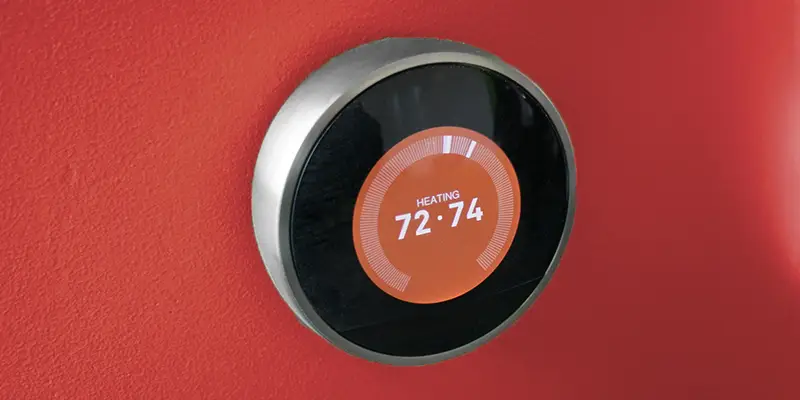
Aire Serv explains how to set a programmable thermostat for optimal comfort and energy savings.
- Choose the right thermostat for your system
- Set the correct date and time
- Program temperature settings for wake, leave, return, and sleep periods
- Adjust settings for weekends and vacations
- Save your customized schedule
You have probably heard that you can save money on home heating and cooling by installing a programmable thermostat. However, you don’t automatically save just by making an upgrade—you must also program the thermostat to optimize comfort and energy savings. Follow these tips on how to program a thermostat to ensure the best results.
Purchase the Right Model
Different thermostats have scheduling options with varying degrees of flexibility. The three basic options include:
- 7-day: This is best if your family’s schedule varies every day. If flexible daily programming is important to you, purchase this type of programmable thermostat.
- 5+2-day: With this option, you can program one setting for weekdays and another for weekends.
- 5-1-1: If your schedule is consistent Monday through Friday but different on Saturday and Sunday, this is the best option for you.
Establish a Schedule
No matter which scheduling type you choose, your programmable thermostat should allow you to set four programs per day. Establish the settings you want at the start of the season, and then forget about it. Here’s how a weekday schedule might look for an average family:
- Wake at 6:45 am – The thermostat reaches a comfortable temperature in time for the first person to wake up. This should be 68 degrees in the winter and 78 degrees in the summer.
- Leave at 7:30 am – The thermostat sets the temperature back by 10 degrees 30 minutes before the family is scheduled to leave. By doing this for eight hours a day every day, the family saves 5 to 15 percent on heating and cooling costs. The daytime setback should be 58 degrees in the winter and 88 degrees in the summer.
- Home at 4:00 pm – The children return home from school at this time, so the thermostat is programmed to resume a comfortable 68 degrees in the winter and 78 degrees in the summer.
- Sleep at 10:00 pm – The temperature lowers 30 minutes before the family goes to bed. This nighttime setting should be 65 degrees in the winter and 80 degrees in the summer.
Maximize the Savings
The beauty of a programmable thermostat is that it allows you to increase energy savings without decreasing comfort. Here are some expert tips to ensure the best results:
- Avoid overriding programmed settings: You can always override the current temperature if you feel uncomfortable. However, if you consistently change the settings, your energy savings will decrease. Put on an extra layer in the winter or turn on a fan in the summer before you adjust the thermostat.
- Use the proper hold feature: The temporary hold is for day-to-day overrides since they only last until the next programmed temperature change. The permanent/vacation hold setting is appropriate when your family goes on vacation. This hold setting maintains the temperature until you manually cancel it.
- Don’t make drastic temperature changes: When you must override a setting, adjust the thermostat by only a degree or two. Your body should feel more comfortable even with this slight temperature change. Plus, you avoid the potential energy waste that can come from cranking the temperature down to 60 degrees in the summer or up to 90 degrees in the winter.
- Change the batteries: Your new programmable thermostat probably runs on battery power. Remember to replace the batteries once a year a time you can easily remember, such as at the start of the new calendar year or when the kids return to school in the fall.
For more on how to program a thermostat for energy savings, or to learn about upgrading your thermostat, please contact Aire Serv® today.

